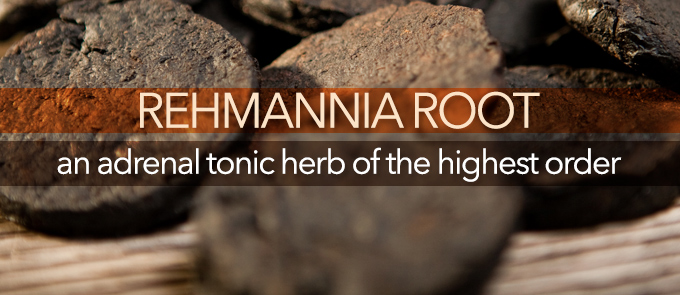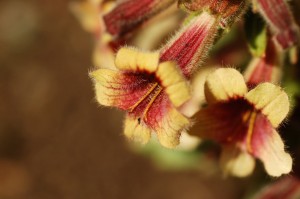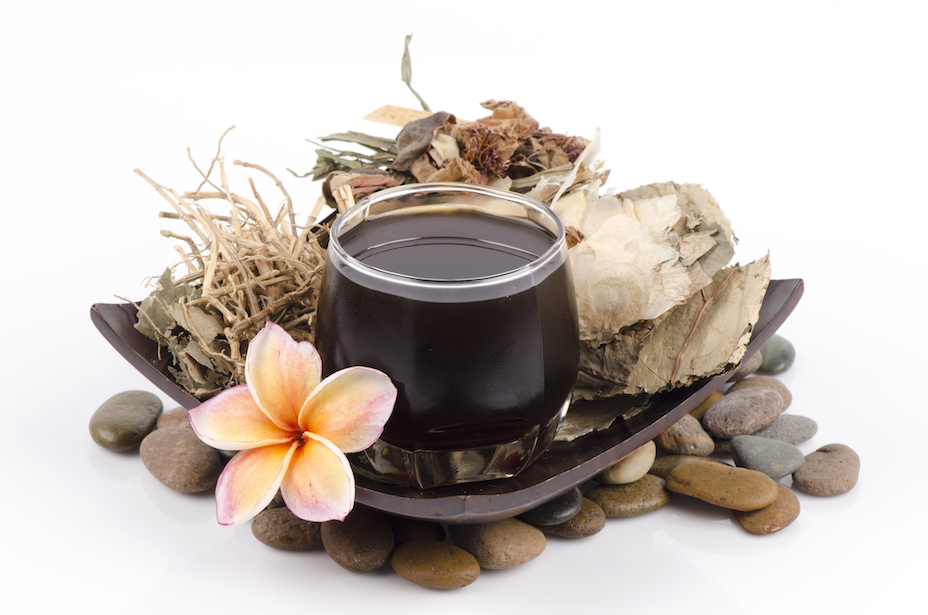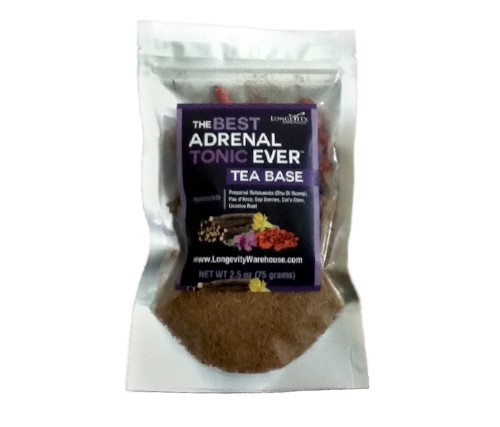
Rehmannia: An Adrenal Tonic Herb of the Highest Order
What is Rehmannia?
A perennial plant of the Phrymaceae or lopseed family, rehmannia is a popular herb in the Chinese medical system. Sometimes referred to as ‘Chinese Foxglove’, its leaves are low to the ground and it blooms with bell-shaped flowers that can range in color from yellow to burgundy.
 Rehmannia Root is a native of China, Korea, and Japan, where it thrives in light, moist, yet well-drained, neutral-to-acid, sandy soil in full sun.
Rehmannia Root is a native of China, Korea, and Japan, where it thrives in light, moist, yet well-drained, neutral-to-acid, sandy soil in full sun.
The whole plant is used to make herbal medicine.
The History of Rehmannia
With a history of use over thousands of years old, rehmannia is one of the most popular tonic herbs in Traditional Chinese Medicine (TCM).
The key to good health in TCM is maintaining the balance between the two opposing forces in your body: yin and yang. Rehmannia is said to “balance the yin” and as such is an important part of many tonic formulas.
First mentioned in Chinese medical literature around 200 B.C., during the Han Dynasty, with a wide and varied list of uses, this root is counted as one of the 50 most important herbs used in Oriental Medicine.
Rehmannia Root is considered to be a longevity tonic that enhances and energizes blood circulation throughout the body, and particularly in the brain, strengthening blood deficiencies and easing symptoms of anemia. This herb is a very effective and popular supplement that will provide your body with support for your brain, heart, nervous, endocrine, and immune systems.
How is Rehmannia used?
Primarily, rehmannia is the number one most important herb in the Chinese system for disorders related to the kidneys and adrenal glands. According to TCM, kidney imbalances can cause weakness in the legs and lower back, and also hearing loss. Because rehmannia is used to restore adrenal function and purify the kidneys, it is considered a helpful tonic for these conditions.
Rehmannia is said to ‘cool down internal heat’ and help decrease blood pressure.
In Asia, it is often used as a helpful tonic for the liver, kidney, and heart, and to treat many other ailments, such as anemia, diabetes, constipation, dizziness, urinary incontinence, and for women experiencing menopause, hair loss, irregular menstrual cycles, and other hormone deficiencies.
Another modern day problem—blood sugar balance—can also be helped by regular use of rehmannia.
Rehmannia is part of a small group of herbs that are used to work with autoimmune diseases. With anti-inflammatory qualities, rehmannia hinders the breakdown of cortisone products in the body, prolonging the effect of this drug when used. In studies, arthritic patients who took rehmannia experienced positive results including a reduction of swelling, joint pain, and experienced increased joint movement.
Rehmannia has also been used with patients who have asthma, fibromyalgia, multiple sclerosis, and various skin conditions.
What is in Rehmannia?
Some of the actual nutritive constituents found in rehmannia are vitamins A, B, C, and D, amino acids, beta-sitosterol, calcium, copper, glucose, glucosamine, rehmaglitin, histidine, mannitol, and zinc. Many of these compounds have strong anti-inflammatory and antifungal properties. Rehmannia’s main active ingredients are iridoid glycosides. One of the first glycosides isolated from the herb was Catalpol, which appears to stimulate production of adrenal cortical hormones and have an anti-inflammatory effect in the body.
The glycoside content in rehmannia helps the body to manufacture certain hormones that are believed to ease some of the unpleasant symptoms of menopause: hot flashes, insomnia, and loss of bone strength. Rehmannia is regarded as an effective fertility enhancer.
This root has a rich, starchy and sweet content that makes it effective as a cloying agent, which makes it helpful for improving liver function and to stop the depletion of glycogen for hypoglycemia. 
It contains astringent compounds that can support the body against the formation of ulcers, and reduce inflammation in the digestive tract. Other compounds in the root help to strengthen the capillaries.
Rehmannia is ‘sweet and cold’. It assists recovery of broken bones, sinews and damaged tissue. It replenishes bone marrow and promotes growth of muscles. When used in decoctions, it eliminates cold and heat accumulations and impediment.
Prepared vs. Raw Rehmannia
Raw and processed rehmannia have very different uses and are considered different herbs in the Chinese system. In TCM, the unprocessed or raw rehmannia root is used to reduce heat in the blood, promote the production of body fluid, and nourish yin. Processed rehmannia is used to treat blood deficiency.
Rehmannia root is not suitable for pregnant or breastfeeding women. It may cause loose stools or bloating in some people.
For best results, it is most commonly used in combination with other herbs, such as are included in The Best Ever Adrenal Tonic Tea Base.





What can you recommend for adrenal support if you are pregnant or nursing ?